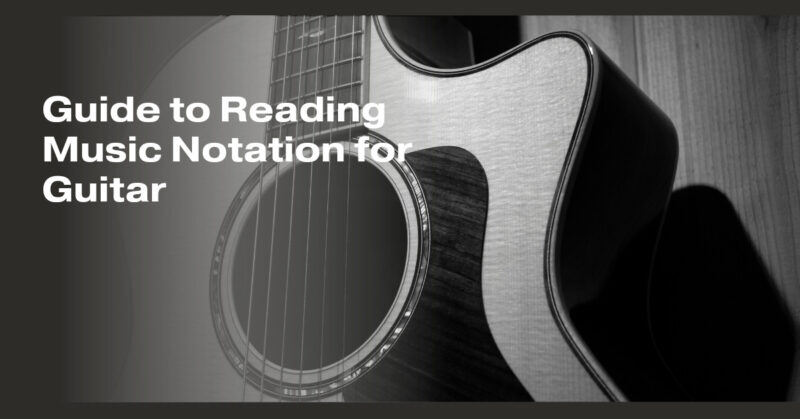Reading music notation for the guitar is a valuable skill that allows you to play a wide range of music, from classical compositions to sheet music for popular songs. Here’s a step-by-step guide to help you understand and read music notation for the guitar:
1. Learn the Basics of Music Notation:
- Familiarize yourself with the elements of traditional music notation, including notes, rests, time signatures, key signatures, and clefs. Understanding these fundamentals is essential for reading guitar sheet music.
2. Understand Guitar Tablature:
- Guitar tablature, often referred to as “tabs,” is a simplified way of notating music specifically for the guitar. Tabs consist of six horizontal lines, each representing a string on the guitar. Numbers on the lines indicate which fret to press on each string.
3. Study Standard Notation:
- Standard notation is the traditional way to write music for all instruments, including the guitar. In standard notation, each note is represented by a symbol on a staff consisting of five lines and four spaces.
4. Learn the Guitar Staff:
- The guitar uses a treble clef (also known as the G clef). The lines and spaces on the staff correspond to the strings of the guitar. The bottom line represents the low E string, and the top line represents the high E string.
5. Know the Notes on the Fretboard:
- To read standard notation, you need to know the names of the notes on the guitar fretboard. Start by memorizing the notes on the open strings (E, A, D, G, B, E) and then learn the natural notes (A, B, C, D, E, F, G) up and down the fretboard.
6. Learn Note Durations:
- Understand the values of different note durations, such as whole notes, half notes, quarter notes, eighth notes, and sixteenth notes. Each note duration has a corresponding symbol.
7. Practice Rhythm and Timing:
- Reading music also involves understanding rhythm and timing. Pay attention to time signatures (e.g., 4/4, 3/4) and practice playing along with a metronome to develop your sense of timing.
8. Start with Simple Pieces:
- Begin by reading and playing simple pieces of sheet music specifically written for beginners. These pieces often include familiar melodies and straightforward rhythms.
9. Use Educational Resources:
- Utilize guitar method books, online tutorials, and sheet music to practice reading music notation. Gradually progress to more complex pieces as you become more comfortable.
Learning to read music notation for guitar opens up a world of musical possibilities and allows you to explore a wide range of musical genres. Whether you want to play classical compositions, jazz standards, or contemporary songs accurately, developing this skill is a valuable investment in your guitar playing journey.


